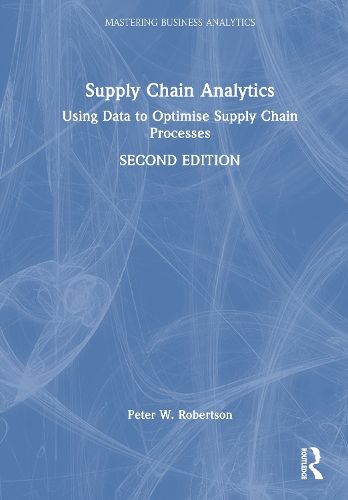Readings Newsletter
Become a Readings Member to make your shopping experience even easier.
Sign in or sign up for free!
You’re not far away from qualifying for FREE standard shipping within Australia
You’ve qualified for FREE standard shipping within Australia
The cart is loading…






Supply Chain Analytics, second edition, introduces the reader to data analytics and demonstrates the value of their effective use in the improvement of supply chain process performance. By describing four-key supply chain processes, and illustrating, through worked examples, how the descriptive, predictive and prescriptive analytic methods can be applied to bring about improvements to those processes, the book presents a more comprehensive learning experience for the reader than has been offered previously.
Key topics and issues are addressed, including the capriciousness of modern era supply chain operating environments, the imperative that is supply chain sustainability, the need for heightened supply chain risk management, the building of supply chain resilience, the pursuit of supply chain optimisation, the use of big data, data mining, cloud computing, machine learning, artificial intelligence (AI), and importantly the social issues confronting supply chain analysts in carrying out their work.
The author identifies four core supply chain processes - strategy, design, execution and people - to which the analytic techniques explained can be applied to ensure continuous performance improvement and growth of competitive advantage.
Pedagogy to aid learning is incorporated throughout, including an opening section for each chapter explaining the learnings designed for the chapter, worked examples illustrating how each analytic technique works, how it is applied and what to be careful of, tables, diagrams and equations to help 'visualise' the concepts and methods covered, end-of-chapter case studies, review questions and assignment tasks.
Providing both management expertise and technical skills, which are essential to decision-makers in the supply chain, this textbook should be essential reading for advanced undergraduate and postgraduate students of supply chain analytics, supply chain leaders, and supply chain and operations management professionals. Its practice-based and applied approach also makes it valuable for teaching academics, organisational trainers and coaches, operating supply chain practitioners and those studying for professional qualifications.
Online resources include chapter-by-chapter PowerPoint slides, tutorial exercises, written assignments, worked examples using Excel, and a test bank of exam questions.
$9.00 standard shipping within Australia
FREE standard shipping within Australia for orders over $100.00
Express & International shipping calculated at checkout
Supply Chain Analytics, second edition, introduces the reader to data analytics and demonstrates the value of their effective use in the improvement of supply chain process performance. By describing four-key supply chain processes, and illustrating, through worked examples, how the descriptive, predictive and prescriptive analytic methods can be applied to bring about improvements to those processes, the book presents a more comprehensive learning experience for the reader than has been offered previously.
Key topics and issues are addressed, including the capriciousness of modern era supply chain operating environments, the imperative that is supply chain sustainability, the need for heightened supply chain risk management, the building of supply chain resilience, the pursuit of supply chain optimisation, the use of big data, data mining, cloud computing, machine learning, artificial intelligence (AI), and importantly the social issues confronting supply chain analysts in carrying out their work.
The author identifies four core supply chain processes - strategy, design, execution and people - to which the analytic techniques explained can be applied to ensure continuous performance improvement and growth of competitive advantage.
Pedagogy to aid learning is incorporated throughout, including an opening section for each chapter explaining the learnings designed for the chapter, worked examples illustrating how each analytic technique works, how it is applied and what to be careful of, tables, diagrams and equations to help 'visualise' the concepts and methods covered, end-of-chapter case studies, review questions and assignment tasks.
Providing both management expertise and technical skills, which are essential to decision-makers in the supply chain, this textbook should be essential reading for advanced undergraduate and postgraduate students of supply chain analytics, supply chain leaders, and supply chain and operations management professionals. Its practice-based and applied approach also makes it valuable for teaching academics, organisational trainers and coaches, operating supply chain practitioners and those studying for professional qualifications.
Online resources include chapter-by-chapter PowerPoint slides, tutorial exercises, written assignments, worked examples using Excel, and a test bank of exam questions.